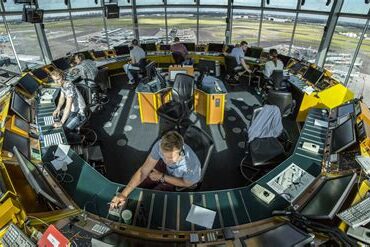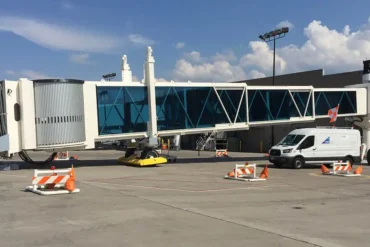Air traffic controllers play a crucial role in guiding planes both in the sky and on the ground. Utilizing advanced technology, they monitor all air traffic within a designated area, ensuring safe takeoffs, landings, and flights. Communication with pilots is essential, as controllers provide instructions for takeoff and landing, as well as weather and ground conditions. Additionally, they oversee ground personnel at airports.
Various types of air traffic controllers have distinct responsibilities and work environments. Those stationed in airport control towers manage runway activity and maintain safe distances between airborne planes. Meanwhile, others operate in air traffic control centers, monitoring and guiding traffic across their designated airspace.
Training Requirements for Air Traffic Controllers
Aspiring air traffic controllers undergo a two-phase training process. The initial phase typically involves an FAA-approved program through the Air Traffic Collegiate Training Initiative (AT-CTI). Approximately 36 schools nationwide offer associate, bachelor’s, and master’s degree programs tailored for prospective controllers.
If you intend to join an AT-CTI program, ensure you meet the FAA’s employment standards. Candidates must be U.S. citizens, aged under 31 upon initial hiring, and pass comprehensive screenings, including criminal history, vision, color vision, hearing, psychological, substance abuse, cardiovascular, and neurological assessments.
AT-CTI programs offer specialized training for air traffic controllers, with varying levels of focus. Associate degree programs closely emphasize air traffic control, while bachelor’s and master’s degree programs broaden their scope to include aeronautics, aviation management, or aviation technology. In associate programs, students delve into topics such as aviation weather, aviation law, basic navigation, flight operations, air traffic control technology, radar, and human factors. Meanwhile, bachelor’s and master’s degree students explore these subjects while also delving deeper into aviation science and branching into computer science, management, or research.
Graduates of AT-CTI programs receive school recommendations and undergo the FAA’s bio-data assessment and Air Traffic Selection and Training Test. Based on test results, the FAA selects a group of graduates to continue training at the FAA Academy. Here, air traffic controllers receive rigorous instruction, combining classroom learning with hands-on practice using air traffic control simulators. Upon completing this intensive program, students are assigned to job locations where they continue training while actively working.
Certification and Licensure
FAA certification is essential for air traffic controllers. Certification involves passing both knowledge and practical exams, along with meeting experience requirements. Post-graduation from the FAA Academy, controllers gain practical experience through on-the-job training.
Timeframe for Becoming an Air Traffic Controller
Becoming an air traffic controller involves several crucial steps, and the timeline varies for each individual. The FAA mandates that prospective controllers accumulate three years of relevant aviation-related work experience. However, this requirement can be fulfilled through a bachelor’s degree program, typically spanning four years.
The FAA Academy provides essential training, lasting two to five months, contingent on an individual’s prior experience. During this period, trainees receive comprehensive instruction, combining classroom learning with practical exercises using air traffic control simulators.
To attain full certification, aspiring controllers engage in on-the-job training, which typically spans two to four years. The duration varies—some achieve full certification within five years, while others may require eight years or more.
Earnings and Job Prospects for Air Traffic Controllers
Air traffic controllers play a critical role in aviation safety, and their compensation reflects their expertise. In the United States, the median annual pay for controllers stood at $122,530 in 2012. During training, controllers receive $17,803, which increases to $37,070 upon placement in a job. However, reaching the median salary often requires years of additional training and experience.
Advancements in technology and budget considerations impact employment prospects. Between 2012 and 2020, the growth rate for air traffic controller positions is projected to be a modest 1%. New hires primarily replace retiring controllers, who typically leave the field at age 56.
Younger candidates with completed AT-CTI programs, relevant work experience, and a willingness to relocate stand the best chance of securing positions in this field.
Long-Term Career Trajectory
Experienced controllers can earn specialized ratings, enabling them to handle more complex roles in bustling control towers and traffic control centers. Additionally, seasoned controllers contribute by training the next generation of air traffic professionals.
Finding Employment Opportunities
All air traffic controllers are employed by the FAA, and job openings are posted on the USAJOBS website. Prospective controllers should complete their education, pre-training, and testing, patiently awaiting suitable openings to apply.
Learn More
For additional insights into becoming an air traffic controller, consult the FAA’s Aviation Careers web page, which features frequently asked questions about training and hiring. The FAA’s Air Traffic Controller Workforce Plan also provides valuable information on the profession’s future.


















